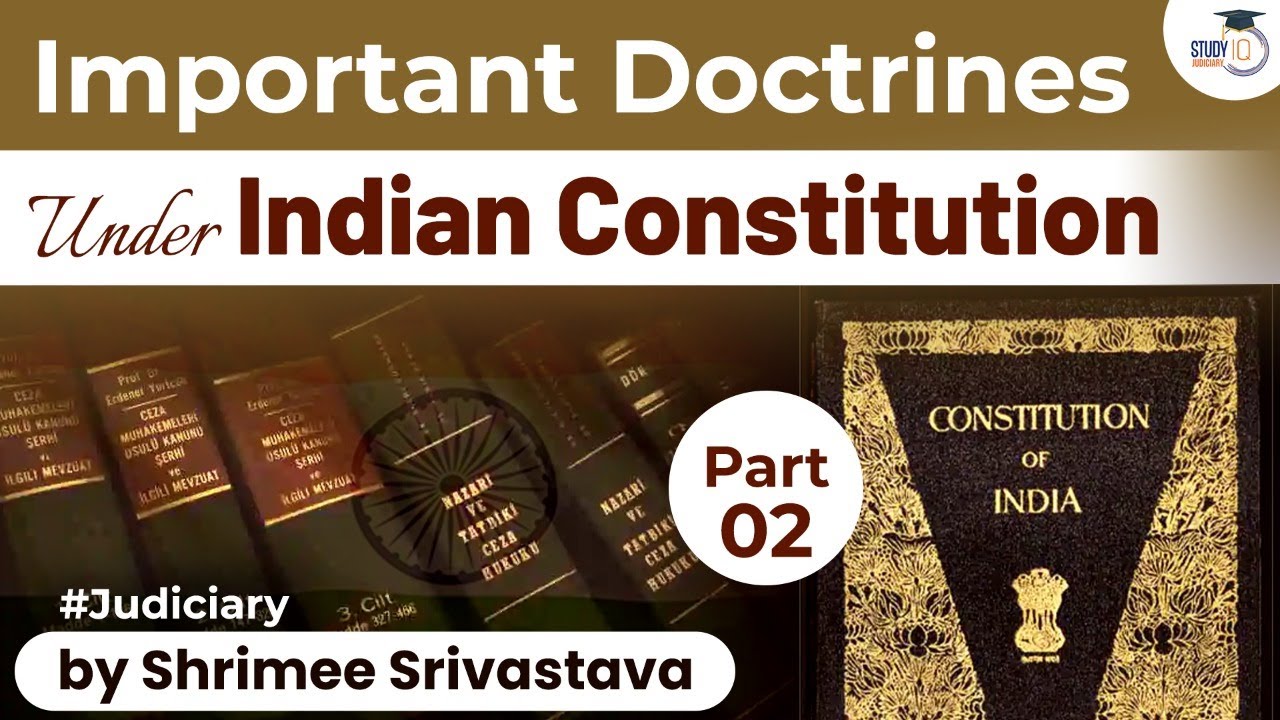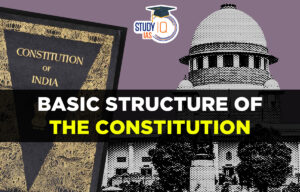Table of Contents
Doctrines Under Indian Constitution
Doctrines
- The Doctrine of Harmonious Construction
- The Doctrine of Colourable Legislation
- The Doctrine of Incidental and Ancillary Powers
- The Doctrine of Severability
Doctrine of Harmonious Construction
- According to this doctrine, a provision of the statute should not be interpreted or construed in isolation but as a whole, so as to remove any inconsistency or repugnancy.
- The courts must avoid a clash on contradicting provisions and they must construe the opposing provisions so as to harmonize them.
- When the court is unable to reconcile the differences between opposing provisions, the courts must interpret them in such a manner that both the opposing provisions are given effect as much as possible.
The objective of Harmonious Construction:
- The objective of harmonious construction is to avoid any confrontation between two enacting provisions of a statute and to construe the provisions in such a way so that the harmonize.
- The basis of this rule is that the Legislature never envisages to provide two conflicting provisions in a statute, for the reason that it amounts to self-contradiction.
- The real legislative intent, that we try to discover in the process of interpretation cannot be to provide for something in one provision and deny the same in subsequent one.
- Hence, even if an inconsistency is found, the same should be considered to be unintentional and as such, is required to be cured by way of harmonious construction.
The doctrine of Colourable Legislation
- The doctrine of colourable legislation checks if the legislature has transgressed its power mentioned in the constitution.
- In simple words, the doctrine checks if a law has been enacted on a subject indirectly when it is barred to legislate on that topic directly.
- The expression “Colourable Legislation” means “what can’t be done directly, can’t be done indirectly as well”.
What is the Concept? (Indian Constitution)
- Separation of powers entails the division or sharing of power.
- The Constitution states that each of these organs should exercise diverse powers in order to prevent the misuse of authority by any of the government’s organs.
- As a result, a system of checks and balances emerges. With respect to their respective subjects, the Constitution has split powers between the federal government and the states.
- However, the legislative body occasionally passes laws that are outside of its purview.
- This signifies it has overstepped its bounds and done something indirectly that could not have been done directly.
- This is known as a colourable exercise of legislative power or establishing laws indirectly while doing so directly is illegal.
- As a result, the theory of colourable legislation was created to prevent legislative authorities from abusing their powers.
- For instance, the constitution provides reservation to only social and educationally backward communities.
- So any attempt to declare the socially forward communities as backward communities and extend the reservation becomes coloured legislation.
The doctrine of Incidental or Ancillary Powers
- The doctrine of incidental or ancillary powers indicates that if a legislative body has the power to legislate on a particular matter, then they have the power to legislate on ancillary topics related to that matter.
- Unless that ancillary topic is mentioned explicitly under the jurisdiction of another legislative body.
Concept
- This doctrine helps the judiciary determine if the statute made by a legislative body is valid or not along with the doctrine of Pith and Substance.
- What this means is that the authority to legislate on a subject includes the ability to legislate on ancillary subjects that are reasonably related to that subject.
- For example, the power of the central government to impose income tax would include the ability to examine and seize property in order to prevent income tax evasion.
- Powers connected to banking, on the other hand, cannot be extended to non-banking businesses.
- However, a subject cannot be considered auxiliary if it is specifically specified in a State or Union list.
- For example, pilgrimage is a state subject but it cannot include pilgrimage outside India is not ancillary as it is a separate entry in the Union List.
- With the adoption of the Constitution of India in the year 1950, Part III in the form of fundamental rights also came into effect.
- The fundamental rights are a set of inherent rights which guarantees to every citizen of this country a life of dignified existence and holistic all-round development.
- Any law that infringes upon these rights is liable to be struck down by the courts.
- The question however arises as to what happens when only a portion of the impugned law is violative of fundamental rights, and it is in instances like these that the doctrine of severability is invoked.
Doctrine of severability of Indian constitution
- The fundamental rights are a set of inherent rights which guarantees to every citizen of this country a life of dignified existence and holistic all-round development.
- Any law that infringes upon these rights is liable to be struck down by the courts.
- The question however arises as to what happens when only a portion of the impugned law is violative of fundamental rights, and it is in instances like these that the doctrine of severability is invoked.
The doctrine derives its validity from Article 13 which states,
“All laws in force in India, before the commencement of the Constitution, in so far as they are inconsistent with the provisions of fundamental rights shall to the extent of that inconsistency be void.”
- As an extension of Article 13, the doctrine states that when some particular provision of the statute infringes or violates the fundamental rights, but the provision is severable from the rest of the statute, and then only that provision will be declared void by the courts and not the entire statute.
- The doctrine essentially lays down that if violative and non-violative provisions are separated in a way that the non-violative provision can exist without the violative provision, then the non-violative provision will be upheld as valid and enforceable.
Download | Free PDF



 Right to Free Movement, Restrictions and...
Right to Free Movement, Restrictions and...
 Schedules of Indian Constitution, 12 Sch...
Schedules of Indian Constitution, 12 Sch...
 Basic Structure of the Constitution
Basic Structure of the Constitution





















